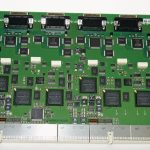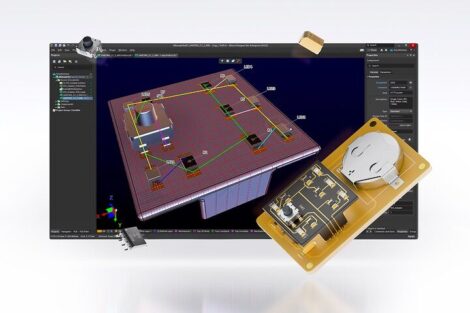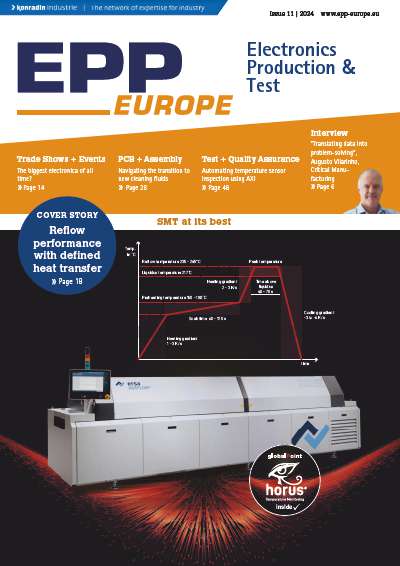For more than 50 years, IPC has developed industry standards for the production of electronic hardware. After having been long considered North American standards, IPC standards over the past two decades have spread globally. The question now is: what benefit do IPC standards have for the electronic hardware supply chain?
Providing answers to that question, several companies in Europe representing electronic design, CAD, bare board production, assembly and soldering explain how they use IPC standards in their daily business routines.
This first article covers electronic design/CAD company, GED GmbH, located 30 km southeast of Cologne in Germany.
First experience with IPC standards
GED offers PCB design and engineering and, through the assistance of external subcontractors, bare board, assembly and test services. Currently the company has 14 employees and CAD systems from six different layout vendors. With these resources, the company produces 160 new PCBs and 80 updates per year for rigid, flex, flex-rigid and HDI boards for customers in Germany, Italy, Sweden, the Netherlands, France and the Czech Republic.
From its establishment in 1986 to the middle of the 1990s, the company used its customers’ internal standards from companies such as Siemens, Philips, Rheinmetall and Thyssen. This meant that a different standard was used for every customer. An example of this frustrating situation, says Hanno Platz, owner and managing director, “was when we received an inquiry from Hewlett Packard in Germany with an attachment of 100 pages of requirements for the PCB in question.” At that time, the staff did not know about IPC and its standards. In 1995, the company had a U.S. customer that demanded that the assembly and soldering of a back plane, developed and produced in Germany, be conducted at their U.S. premises according to IPC-A-610, Acceptability of Electronic Assemblies, Class 3 acceptance criteria.
Technology focused on standards
GED found IPC standards through FED, a local German organization with a long-time relationship with IPC, and bought first set of IPC standards. The back plane could now be designed and produced according to IPC standards. Having standards from different areas of the production chain that linked together was a new and positive experience for the company. The staff now regularly discusses how to use IPC standards in their own designs as well as in the purchasing process of bare boards plus assembling and soldering.
Currently, all employees have passed CID (Certified Interconnect Designer) and CID+ (Advanced Certified Interconnect Designer) and are familiar with nearly all IPC standards for electronic design and CAD. All of their order acknowledgments for designing a complete PCB include the following statement, “If nothing else has been agreed upon, PCBs will be manufactured according to IPC standards and its Class 2 acceptance criteria.”
At GED, designers also create PCB layouts. Today, most new PCBs are HDI (high density interconnected) with a high SI (signal integrity) level including high EMC (electromagnetic compatibility). IPC standards have an important influence on these complex boards. The company uses the following IPC standards in their design work:
- The IPC-2220 PCB design series for mechanical properties of track, isolation and PTH (plated-through holes)
- IPC-2223B, Sectional Design Standard for Flexible Printed Boards for flex-rigid PCBs and questions like adhesive type, placement of a flex layer into the rigid part and coverlay dimensions
- IPC-7351A, Generic Requirements for Surface Mount Design and Land Pattern Standard for footprint (land) design, which is even more important than before because of lead-free processes, especially when components like CSPs (chip scale packages) and QFNs (quad flat no leads) are specified in the BOM list.
- IPC-A-610E, Acceptability of Electronic Assemblies for acceptability of solder joints and assemblies
- IPC-2251, Design Guide for the Packaging of High Speed Electronic Circuits and IPC-2141A, Design Guide for High-Speed Controlled Impedance Circuit Boards.With the need to comply with EU Directive 2004/108/EC, and its requirements for high EMC on all PCBs placed in the EU market, SI has become more critical. These standards assist GED designers in selecting microstrip or stripline build up for impedance.
Tool with benefit
The company’s ISO 9002 certification states that Deutsches Institut für Normung e.V. (DIN) and IPC standards serve as the foundation for quality work. IPC standards are required as a tool when the company uses external vendors for bare boards and assembly. For all potential suppliers in Europe, the staff conducts company visits that include an audit of the bare board supplier and their use of IPC standards, especially the IPC-6010 board manufacturing series and IPC-A-600H, Acceptability of Printed Boards. According to Platz, “After visiting hundreds of bare board suppliers, we’ve concluded that the majority of suppliers understand IPC standards but very few can make boards according to IPC Class 3 acceptance criteria. This is absolutely something that needs to improve.”
According to GED, IPC standards are the basis of electronic product quality and reliability. In the design process, technical parameters like choice of base material, pad sizes, spaces/traces and isolation distances between layer and component pitches are constant considerations. The use of IPC standards makes it much easier to find solutions. Without IPC standards, the alternative can involve high repair/touch up costs and lots of scrap but also an imperfect electronic product from a quality and reliability point of view. In some cases, this has been a very costly experience for the company’s customers that have not used IPC standards. Platz gives two examples:
Example 1: Working to improve EMC capabilities on a PCB, a designer placed via holes directly in surface mount pads. The result was years of solder and wetting problems with only an 80 to 90 percent yield and difficult repairs. The designer, by not following the standard, placed vias in a pad that was too tight. The profit loss over several years was estimated to be 50,000 to 60,000 Euros. The company was ultimately able to solve the problem by redesigning via hole placement that improved EMC properties.
Example 2: A complex 12-layer HDI board with BGA components on both sides needed to be manufactured using a lead-free process. After the transfer, yield went down to 50 percent. The reason: wrong design parameters and bad layer configurations were used and pads too small for via holes were created. With a higher lead-free solder temperature, many irreparable barrel cracks were created in via holes. The total loss due to the 50% yield in the lead-free process was more than 100,000 Euros.
For GED, IPC standards have been an invaluable tool over the past two decades. IPC standards not only save money, they also make it easier to communicate with bare board suppliers and assembly companies across the world. IPC standards can significantly reduce mistakes and improve end-product quality and reliability.
Share:













